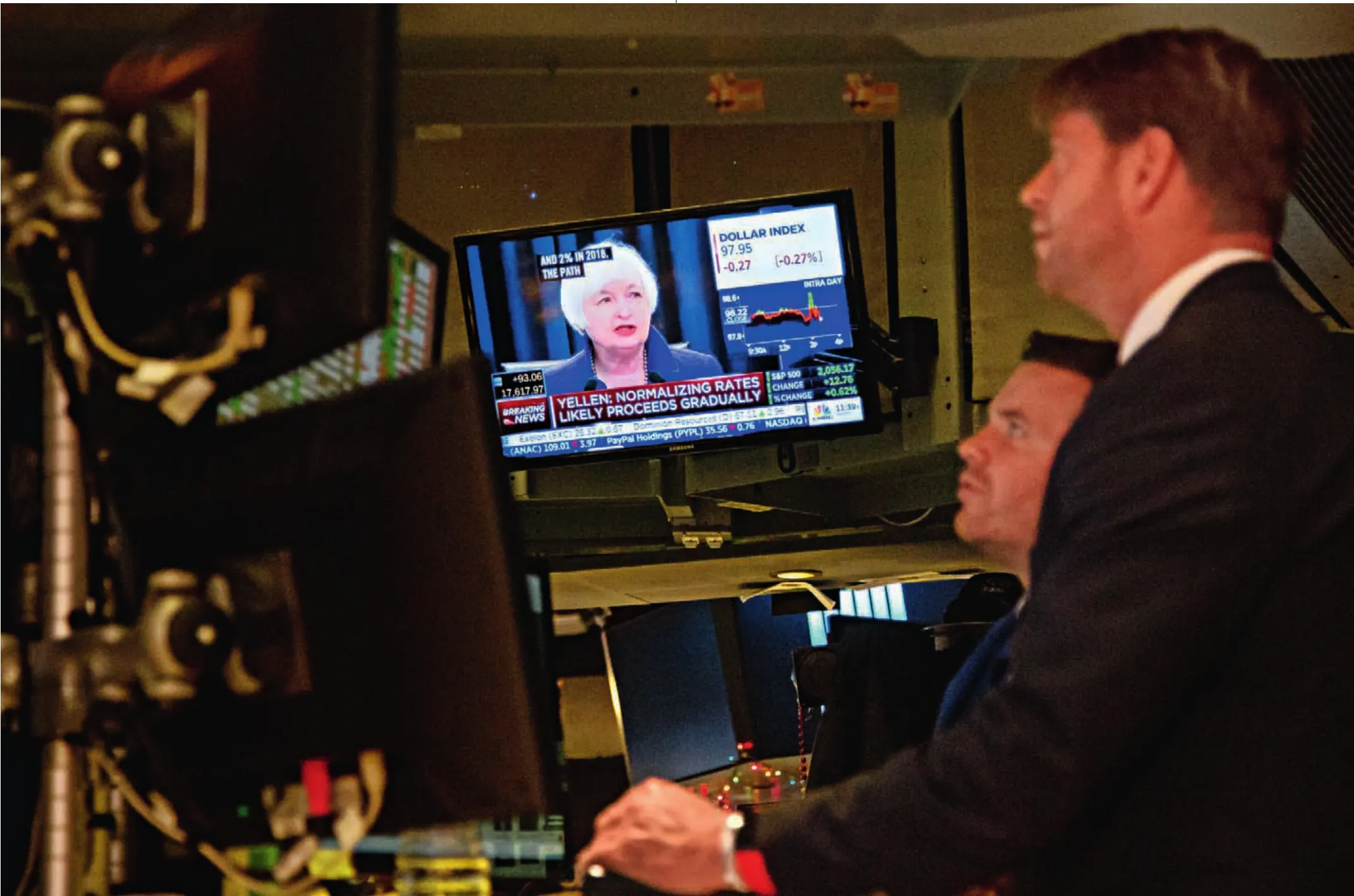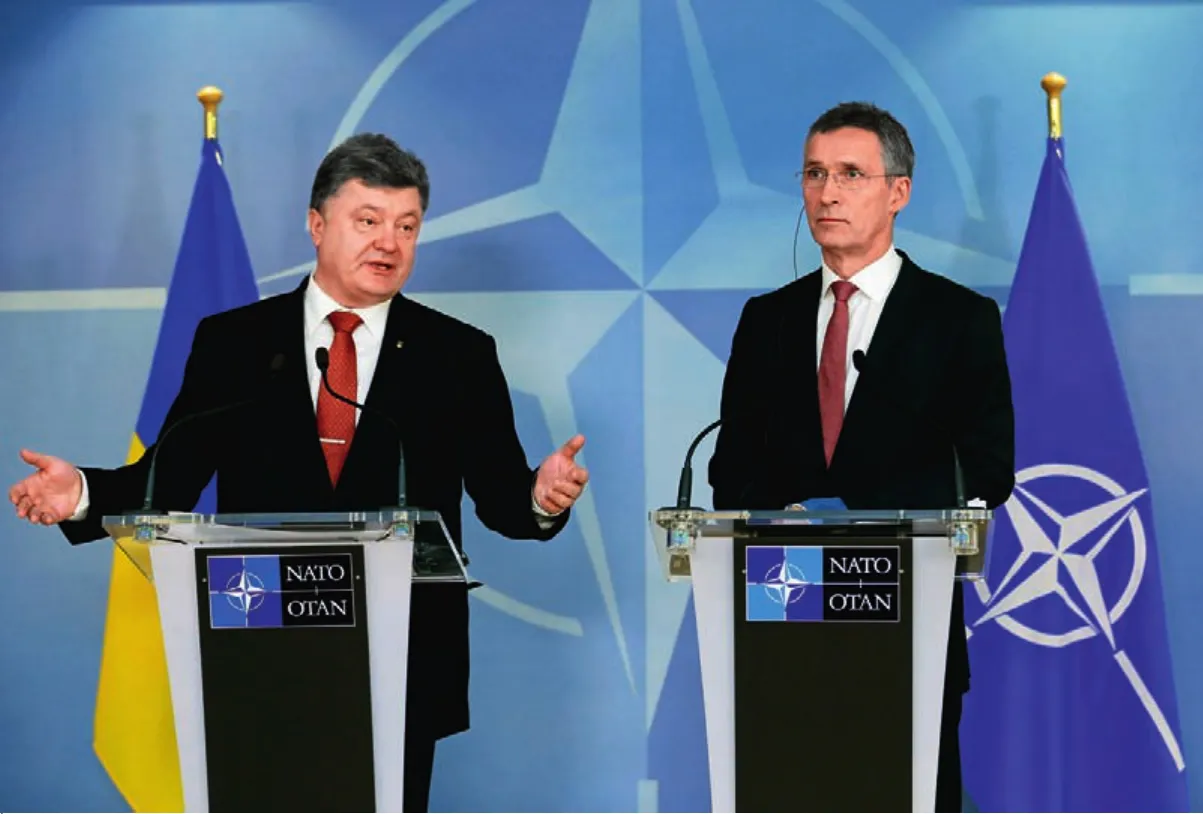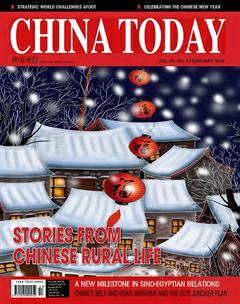Strategic World Challenges Afoot
By HE YAFEI
Strategic World Challenges Afoot

Members of the UN Security Council unanimously adopt on December 17, 2015 the new resolution to cut off the ISIS funding chain.
By HE YAFEI
C HINESE newspaper Global Times recently listed top four world concerns in 2016. They are: who will become the next U.S. president? Will China’s economy rebound? Will ISIS be eliminated? What new challenges will the South China Sea face?
Other mainstream media worldwide also list problems that should be solved in 2016. The Wall Street Journal’s 12 predictions this year included the rise of populism, the collapse of ISIS, world agreement on the solution to energy problems, further Sino-U.S. cooperation, and price fluctuations of staple commodities. There is no lack in the world today of intractable issues and conundrums, but problem-solving approaches and ideas, as well as interest in the global consensus, are in short supply.
The year 2016 marks the start of China’s 13th Fiveyear Plan period. China will lead the new economic normal, and seek innovative, coordinated, green, open, and shared development. However, growing globalization has filled our world with more uncertain factors, such as snail-paced economic recovery, escalating geopolitics, intensifying competition among great powers, general elections in many countries, rampant terrorism, massive refugee flows, and the widening wealth gap.
The world today has become a community of interests, and the interdependent global economy is a fact. No country can just mind its own business without thoughts for others. The time of “clearing snow away only from one’s own front door” has gone. Only when countriesform a community of shared future can we meet the challenges that arise.
Parlous State of World Economy
In 2016 the global demand is predicted to continue to slide. We are still in the depths of an economic downturn. A new crisis is likely to occur, especially in view of the worrisome accumulation of financial risks.
According to an estimate by Consensus Forecasts, there will be 2.8 percent global economic growth in 2016, just 0.2 percent higher than last year. Apart from that of the U.S. (2.5 percent growth) and of the U.K. (2.35 percent growth), many rich economies will remain weak. Growth of the Eurozone will increase 1.7 percent and that of Japan 1.2 percent. The strong dollar will lead to an inverse flow. The debt burden of some developing countries has grown due to financial constraints, which increases the possibility of another financial and economic crisis.

Zhang Yuyan, director of the Institute of World Economics and Politics of the Chinese Academy of Social Sciences, believes that as long as no large-scale financial crisis contagion occurs, global GDP in 2016 will grow at three percent.
This is “a world in which debt levels are too high, productivity growth too weak, and financial risks too threatening.”
Generally speaking, the world economy in 2016 needs to pay particular attention to the following problems.
First, because of the strong dollar and the persistent raising of interest rates by the Federal Reserve (FED), Eurozone countries will still be embroiled in the debt crisis. Meanwhile, capital outflows and currency devaluations in developing countries like Brazil, Turkey, Malaysia, Indonesia, and South Africa are worrying. Neither can the possibility of systemic financial crises and the contagion effect be excluded.
Since the 2008 financial crisis, major countries have constantly launched loose monetary and fiscal policies. Since 2007, the global debt has swollen to US $57 trillion. The GDP growth of emerging marketing economies, meanwhile, dropped from 7.4 percent in 2010 to 3.8 percent in 2015. In addition, shrinking global trade is taking the world economy to the edge of a new recession.
The Bank for International Settlements has stated plainly that this is “a world in which debt levels are too high, productivity growth too weak, and financial risks too threatening.” As Paul Mason wrote in The Guardian, “It’s impossible to extrapolate from all this the date the crash will happen, or the form it will take. All we know is there is a mismatch between rising credit, falling growth, trade and prices, and a febrile financial market, which, at present, keeps switchback riding as money flows from one sector, or geographic region, to another.”

The United States Federal Reserve Board announces on December 16, 2015 its first interest rate hike in a decade.
Second, since it is difficult to carry out a fundamental reversal of the declining tendency of the world economy, the price of staple commodities will remain on the fall. The low price of crude oil in particular constitutes a complex risk to the world economy. Energy exporters such as Australia, Canada, Brazil, Russia, and South Africa not only have weaker debt repayment ability, but are also suffering exacerbated financial situations. In 2015 the GDP of Brazil decreased 3.5 percent and that of Russia 3.8 percent. They might suffer negative growth again in 2016, although to a smaller extent.
Third, growing economic uncertainty goes against expectations of steady growth, so causing a fall in investment and trade. Such uncertainties include the unpredictable result of FED’s raising of interest rates. The Eurozone’s weak demand and high unemployment might also trigger a new crisis. Countries that rely on bulk commodity exports might fall prey to economic crises that will lead to a global systemic crisis.
Rising Geopolitical Challenge
The geopolitical challenge will enter the spotlight in 2016. At present, constant regional conflicts are causing chaos. Power games among major powers are fiercer and more complicated, and there is a growing possibility of outbreaks of local wars. Moreover, as this is the U.S. election year, any geopolitical conflict worldwide is magnified, so skirmishes could engender major conflicts.
First, there is no sign of a change in the deadlocked Ukraine crisis. The issue of European security, U.S.-Russian relations, and Russian-European relations all face uncertain prospects. The three parties need to think deeply, as if any one of them should head in a different direction the consequences will be dire.
Second, there appears to be no immediate solution to the turmoil in the Middle East. Recently, Saudi Arabia, Bahrain, and Sudan all severed diplomatic relations with Iran, making the regional situation even more tense and proxy wars more likely. Although agreement has been reached on the Iran nuclear issue, this does not reduce regional conflicts. It instead puts the Gulf countries and Israel more on their guard against Iran. Outbreaks of military conflict are by no means impossible. In this context, although terrorist and extremist forces such as ISIS took a hit in Iraq, they show now sign of flagging. The threat of terrorist attacks has instead become greater.
Third, the Obama administration’s rebalancing to Asia strategy entails its constant show of force in Asia, espe-cially in the South China Sea. Supported by the U.S., Japan also attempted sending warships to patrol the region. No matter what the result of its general election might be, the Philippines will look to the International Court of Justice to rule on the dispute in the South China Sea, where the situation is becoming even more strained.
The acute and complex geopolitical situation will, in turn, affect economic recovery and growth.
Changing Global Governance Pattern
The challenge of global governance and new international regulations will be complicated by superpower games, so signaling a phase of substantive contest.
In 2015, China and its developing peers began to participate more in global governance. The country paid almost eight percent of UN membership dues – third highest – and also covered more than 10 percent of peacekeeping expenditure – second highest.
The cooperation among BRICS and the Shanghai Cooperation Organization countries has deepened. The Asian Infrastructure Investment Bank (AIIB) and Belt and Road Initiative, with its new international cooperation of “common development and prosperity,” have been well received by many countries.
The IMF has added the RMB to its currency basket of Special Drawing Rights (SDR), and the IMF and World Bank reform schemes have also been achieved. All this shows that global governance has changed from “rule by the West” to “co-governance between East and West.”The year 2016 will see a brand new age along with the change of global governance and international pattern.
China, according to the rotating presidency, will host G20 summit in 2016. Now is a critical period wherein the G20 must transform from a crisis management mechanism to a long-term governance mechanism. It is also a time for countries to discover new economic growth points and development cooperation patterns. Many countries, including the U.K., France, Germany, and Australia, place high hopes on China. They hope to gain wisdom and a new development mode from China that will fuel comprehensive growth of the world economy.
Chinese President Xi Jinping mentioned three problems of global governance. First, although the world economy is no longer in crisis, the economic recovery base is nevertheless weak and there is a lack of growth impetus. Second, reforms to global economic governance have not progressed smoothly. International economic and trade rules are undergoing profound changes. Third, the international community lacks solidarity. As a main body of world economic coordination, the G20 faces great difficulty in managing macroeconomic policies.
At this historic juncture, China has displayed the courage to shoulder its responsibility in hopes of sharing its development experience with other countries. President Xi announced at the G20 Summit in Turkey in 2015 that the theme of the 2016 Summit will be building an innovative, invigorated, interconnected and inclusive world economy. This vision reflects China aligning its national governance and development concepts with the latest development in global governance and development pattern. It has been observed that China has started to take the lead in global governance.

Ukrainian President Petro Poroshenko (left) and NATO Secretary General Jens Stoltenbery attend on December 17, 2015, a joint press conference in Brussels, Belgium, at which Stoltenberg said that there was a chance of renewed warfare in eastern Ukraine.
Members of the G20 account for 80 percent of global GDP, and include world major powers. In a manner of speaking, the G20 is vital to the future of world politics and economy. Whether global governance can gain ground depends on the stable development and appropriate handling of the relationship between major countries, Sino-U.S. relations in particular.
Judging from the Sino-U.S. cooperation on tackling climate change, the two countries have reached a consensus. They are also working cooperatively to solve other global challenges, which benefits bilateral ties and world peace and development. Great efforts should be made to expand the cooperative field and scope, so as to jointly reform and improve global governance. In 2016, the U.S. should avoid the negative effects on bilateral relations of the presidential election. Both sides should enhance mutual trust and eradicate doubts and so benefit the world.
In 2016 the two countries can exercise good global governance in three aspects. First, they must firmly adhere to the path of economic innovation and coordination. Second, they must cooperate to solve the G20’s absence of executive ability, and make it the steering committee of world economic coordination. Third, further reforms must be made to the global governance mechanism, and the right of speech of developing countries must be enhanced in efforts to adapt to the changes of global power contrasts.
HE YAFEI is the former deputy director of the Overseas Chinese
Affairs Office of the State Council and former vice minister of foreign affairs.

